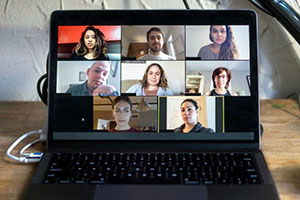 People-watching has long been one of my favorite hobbies. I enjoy watching people’s behavior, body language, and facial expressions, especially when they believe no one is watching. I enjoy making hypotheses about what the person will do next and imagine backstories for each person I encounter. While people-watching is a fun way to pass the time (and reduce time spent doom scrolling), building the skill of people watching, even online, can be particularly effective in the workplace.
People-watching has long been one of my favorite hobbies. I enjoy watching people’s behavior, body language, and facial expressions, especially when they believe no one is watching. I enjoy making hypotheses about what the person will do next and imagine backstories for each person I encounter. While people-watching is a fun way to pass the time (and reduce time spent doom scrolling), building the skill of people watching, even online, can be particularly effective in the workplace.
As a young professional, I was blessed with a mentor who taught me the art of reading any room. Before we walked into any conference room, she would prime me with things I should try to observe (the place chosen at the table, who initiates conversations, who takes notes, who pushes for conclusion, etc). Then, after each meeting, we would meet to discuss what I observed, and she would share her observations, as well. Over time, I learned to focus on the subtleties of human behavior that are often overlooked or disregarded. Becoming more observant of behaviors and interactions helps you quickly identify the organizational culture, influential individuals, underlying conflict, power struggles, and opportunities for engagement.
Here are a few of my favorite people-watching objectives at each meeting:
- Order of arrival—Pay attention to the order in which individuals arrive for a meeting, and see if you can identify a pattern over time. Each individual has a different perception of what “on time” means, and there are individual differences for timeliness. However, beyond personality preferences, when an individual is early, it can be a positive indicator for respect and/or excitement. Similarly, when a person arrives late or fails to attend meetings, that could be a sign that they are uninterested in the topic, unaware of the perception that tardiness is disrespectful, or they’re over-worked and are struggling to keep up. Over time, you can observe the pattern to see if the behavior is consistent for the individual or just concerning certain meetings.
- Seating choice—It’s common for leaders to sit at the “head of the table,” but when they choose not to do so, I take notice. If the leader bypasses an open head-of-the-table seat, and chooses a less prominent one, it often signals that they have a more inclusive leadership style. They don’t intend to dominate the conversation and are sending a clear message that everyone is on equal footing.
- Gender dynamics—When thinking about gender dynamics and micro-aggressions, I watch for behavior that signals the role women play on a team. Are women often asked to be the note-takers for the conversation? Who is asked to get water or fresh coffee for the group? Have the women been given equal physical space at the table? Are there any noticeable gender dynamics when it comes to idea creation and support? Does anyone talk over other team members or interrupt them? Are ideas restated and claimed as their own by certain team members? Does the group notice and correct this behavior?
- Body language—When I’m new to a group and haven’t identified which individuals are influential, I watch to see the direction of body language. Even when a leader chooses a less prominent seat in the room, team members still turn their bodies toward that individual naturally, so this can be a great early indicator of who holds power.
- Attentiveness—I can often make some hypotheses about engagement based on who leans in, takes notes, leaves their laptop/smartphone behind, etc. As with punctuality, in this case I’m often looking for overall patterns of behavior. For example, suppose someone is generally attentive but disengages to check their email when a specific topic is covered (or when a certain person is speaking). In that case, I pay particular attention to what that nonverbal behavior says about the interpersonal dynamics. I also watch to see who is taking notes, who leans in, and who makes eye contact with the speaker as positive signs of engagement.
- Leader-specific observations—Finally, there are several leader-specific behaviors that I look for as a positive sign about the organizational culture. I pay particular attention to what behavior is rewarded or corrected. For example, if someone is cut-off mid-sentence, does the leader intervene and ensure the interruption is addressed? I watch to see if the leader gives each individual the same attention and respect while they present. I listen for how often the leader shows appreciation for others and gives credit to others for their efforts. I listen for how many times I hear “I” “we.” Often, the leader’s behaviors (both verbal and non-verbal) set the example for what is expected across the organization, so it is critically important that the leader’s behaviors align with the organization’s values.
There is so much to learn about an organization’s culture, values, and power dynamics just by watching and listening. Spend some time people-watching in your next group meeting and see if you can observe any new dynamics that you’ve previously missed.
